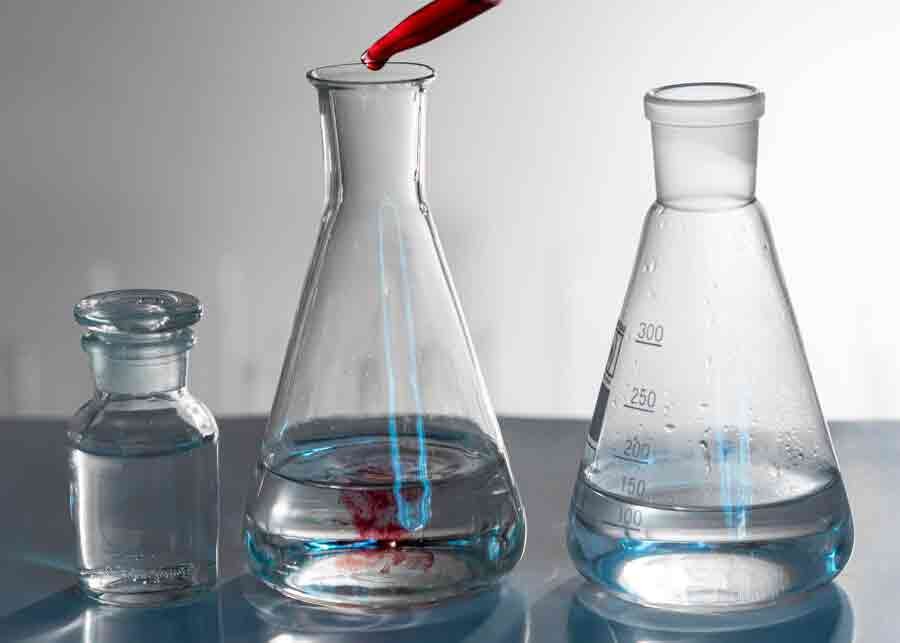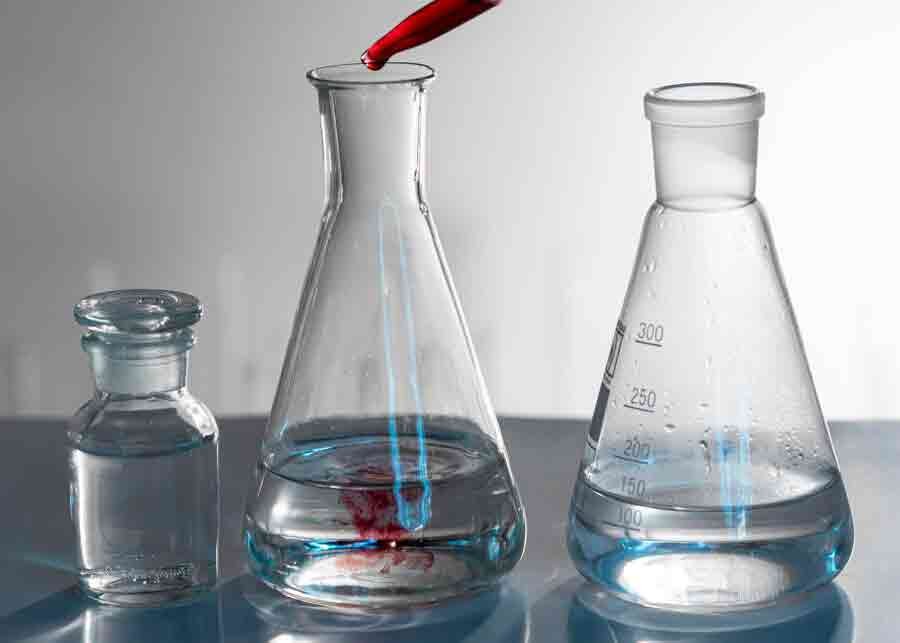
Table of Contents
Introduction
The most widely used laboratory flask in laboratories is the conical flask. It is a glass flask with a flat base, a conical body, and a cylindrical neck.
It is named after its discovery in 1861 by a German chemist named Emil Erlenmeyer.
It is also known as the Erlenmeyer flask. This blog post provides a comprehensive overview of various educational demonstrations and experiments using Erlenmeyer flasks.
the Erlenmeyer flask, an iconic piece of laboratory equipment, embodies both simplicity and versatility
Unveiling the Erlenmeyer Flask
First things first, let’s break down what an Erlenmeyer flask is. Picture a vessel with a conical body, a cylindrical neck, and a flat bottom. It is usually made of glass and comes in various sizes to suit different tests. You may have seen it in your high school chemistry class or in a TV show or movie with a lab scene. Yes, it’s ubiquitous!
So, why all the fuss about this seemingly simple flask? Well, let me tell you, it’s more than meets the eye. One of the most striking features of the flask is its versatility. Do you want to mix chemicals? Cheque. Heating fluids? Cheque. Cultivating microbes? Cheque.
The Versatility of the Erlenmeyer Flask
Its design makes it perfect for a wide range of tasks, from simple mixing to complex reactions. But it is not only practical; the flask also plays an important role in ensuring the safety of experiments. That cone shape? This helps prevent splashes and spills, reducing the risk of accidents in the lab. Additionally, its short neck allows for easy swirling and pouring without the need for additional equipment.
Emil Erlenmeyer: The Genius Behind the Flask
One of Erlenmeyer’s most significant contributions to science was his development of the conical flask. Now let’s talk about its appearance.
A staple piece of laboratory equipment known for its unique shape and practical design. Usually made of glass, the Erlenmeyer flask has a conical body with a flat bottom and a cylindrical neck. The neck of the flask is significantly narrower than the base, allowing for easy pouring and reducing the risk of spillage.
The smooth, clear glass construction of the flask allows easy observation of the contents inside, making it suitable for a wide range of scientific experiments and procedures. Its simple and elegant design has made it a ubiquitous instrument in laboratories around the world.
Erlenmeyer flasks come in a variety of sizes, from small volumes suitable for precise measurements to large capacities for bulk mixing and storage.
It owes its name to Emil Erlenmeyer, a German chemist who invented His genius invention revolutionized the way chemists conducted experiments, providing a more efficient and safer alternative to traditional glassware.
The Erlenmeyer flask is not a relic of the past; it is still widely used today, thanks to its timeless design and practicality. Visit any chemistry lab, and you will find a collection of these iconic flasks lining The shelves.
Experimentation Made Easy

So, how exactly is This flask used in real-world experiments? Let’s get into some examples. Need to titrate a solution to determine its concentration? The flask has you covered. Add and titrate your solution with the appropriate indicator. Its short neck makes it easy to spot color changes, ensuring accurate results every time.
- How the Erlenmeyer flask remains relevant in today’s scientific experiments.
- Real-world examples of its usage in chemistry, microbiology, and more.
- Using Erlenmeyer Flasks Chemistry Experiments at Home
But that’s not all. This flask is indispensable in the world of microbiology. Need to grow bacteria for testing? Sterilize your flask, add your nutrient broth or agar, and voila! The conical shape provides ample surface area for microbial growth, while the narrow neck helps maintain sterility.
Let’s not forget about its role in chemical synthesis. Whether you’re conducting a simple acid-base reaction or a complex organic synthesis, an Erlenmeyer flask can be helpful. Its sturdy construction can withstand various temperatures and chemical reactions, making it a reliable choice for any experiment. The Erlenmeyer flask is available in a variety of sizes.
Conclusion: Legacy of the Erlenmeyer Flask
In conclusion, this flask may seem like a small piece of laboratory equipment, but its impact on the world of science is extraordinary. From its versatile design to its vital role in ensuring experimental safety, this trusty flask has earned its rightful place in the annals of chemistry history. So, the next time you see an Erlenmeyer flask in the lab, show appreciation for all it does—cheers to science and the wonders.

